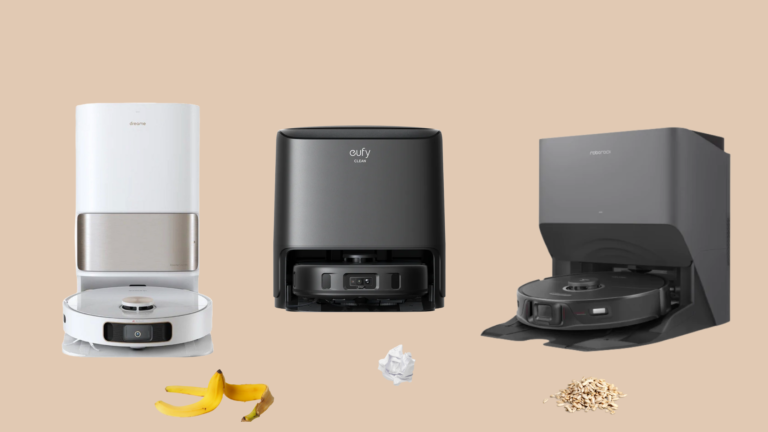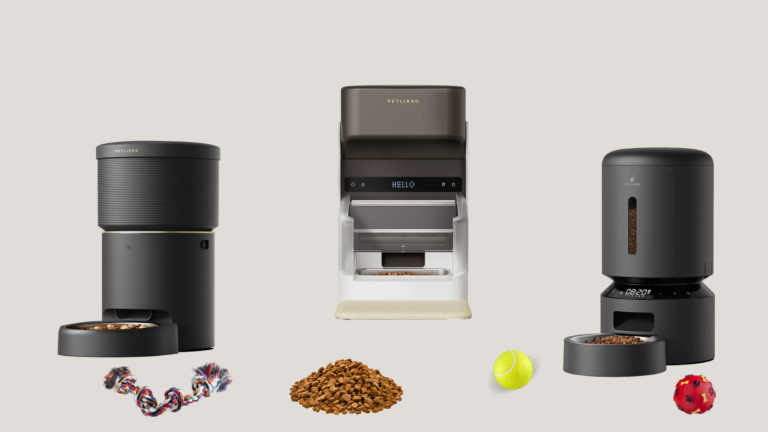We independently review our recommendations, and we may earn commissions from provided links. Find out more.
How To Screen For Cancer ( All 6+ Types of Contemporary Cancer Scans)

By Alexander Arnaudov Last Updated January 7, 2024

Cancer can be a devastating disease, but with the right tools and knowledge, we can take steps to catch it early and increase the chances of successful treatment. In this article, I will share information on how to screen for all types of contemporary cancer scans.
One of the most common cancer screening methods is a mammogram, which is used to detect breast cancer. This type of scan uses low-dose X-rays to create images of the breast tissue and can detect abnormalities that may not be felt during a physical exam. Other types of cancer scans include colonoscopies, which can detect colon cancer, and Pap tests, which can detect cervical cancer.
It’s important to note that not all cancers can be detected through screening, and some types of cancer may not have reliable screening methods available. However, for those cancers that can be screened for, regular screening can be a lifesaver. By staying informed and proactive about our health, we can take steps to catch cancer early and increase our chances of successful treatment.
How do you prevent cancer?
Cancer is a disease that occurs when abnormal cells in the body grow and divide uncontrollably, forming a mass of cells called a tumor. There are many different types of cancer, each with its own set of symptoms and treatment options.
Here are some of the most common types of cancer:

Breast Cancer: This type of cancer occurs when abnormal cells in the breast tissue grow and divide uncontrollably. It is the most common cancer among women.
Lung Cancer: This type of cancer occurs when abnormal cells in the lungs grow and divide uncontrollably. It is the leading cause of cancer-related deaths worldwide.
Prostate Cancer: This type of cancer occurs when abnormal cells in the prostate gland grow and divide uncontrollably. It is the most common cancer among men.
Colorectal Cancer: This type of cancer occurs when abnormal cells in the colon or rectum grow and divide uncontrollably. It is the third most common cancer in both men and women.
Skin Cancer: This type of cancer occurs when abnormal cells in the skin grow and divide uncontrollably. It is the most common type of cancer in the United States.
Cancer is a disease that occurs when abnormal cells in the body grow and divide uncontrollably, forming a mass of cells called a tumor. There are many different types of cancer, each with its own set of symptoms and treatment options. Well, there’s one type of cancer that’s really hard to diagnose, so how do you prevent pancreatic cancer?
Here are some of the most common types of cancer:
Fundamentals of Cancer Screening
It’s important to remember that early detection is key when it comes to treating cancer.
There are several types of contemporary cancer scans that can be used to screen for cancer. Some of the most common types include:
- Mammography: This is a type of X-ray that is used to screen for breast cancer in women.
- Colonoscopy: This is a procedure that is used to screen for colorectal cancer.
- Pap test: This is a test that is used to screen for cervical cancer in women.
- PSA test: This is a blood test that is used to screen for prostate cancer in men.
It’s important to note that not all cancers can be screened for, and some types of cancer may not have any symptoms in the early stages. That’s why it’s important to talk to your doctor about your risk factors and which types of screening tests may be right for you.

When it comes to cancer screening, there are a few key things to keep in mind:
- Screening tests are not perfect: While screening tests can be helpful in detecting cancer early, they are not 100% accurate. False positives and false negatives can occur, so it’s important to follow up with your doctor if you have any concerns.
- Screening guidelines may vary: The guidelines for cancer screening may vary depending on your age, gender, and other factors. It’s important to talk to your doctor about which screening tests are recommended for you.
- Screening is not a one-time event: Cancer screening is an ongoing process. Your doctor may recommend that you get screened regularly, depending on your risk factors.
Overall, cancer screening can be a valuable tool in detecting cancer early. By understanding the fundamentals of cancer screening and working with your doctor, you can take an active role in your health and well-being.
Imaging Techniques for Cancer Detection
I understand the importance of early detection when it comes to cancer. There are various imaging techniques available to detect cancer, and each technique has its own advantages and disadvantages. In this section, I will discuss some of the most common imaging techniques used for cancer detection.
Mammography
Mammography is a type of X-ray that is used to examine breast tissue. It is commonly used to detect breast cancer in women. During the procedure, the breast is compressed between two plates, and an X-ray is taken. Mammography is a quick and painless procedure, and it is recommended that women over the age of 40 get a mammogram every 1-2 years.
Computed Tomography (CT)
CT scans use X-rays and computer technology to create detailed images of the body. They are commonly used to detect cancer in the lungs, liver, and other organs. CT scans are painless, but they do expose the patient to radiation. It is important to discuss the risks and benefits of a CT scan with your doctor.
Magnetic Resonance Imaging (MRI)
MRI uses a magnetic field and radio waves to create detailed images of the body. It is commonly used to detect cancer in the brain, spine, and other areas. MRI scans are painless, but they can take longer than other imaging techniques. Patients may also feel claustrophobic during the procedure.

Positron Emission Tomography (PET)
PET scans use a small amount of radioactive material to create images of the body. They are commonly used to detect cancer in the brain, heart, and other areas. PET scans are painless, but they do expose the patient to radiation. It is important to discuss the risks and benefits of a PET scan with your doctor.
Ultrasound
Ultrasound uses high-frequency sound waves to create images of the body. It is commonly used to detect cancer in the liver, pancreas, and other organs. Ultrasound is a painless procedure, and it does not expose the patient to radiation.
X-Rays
X-rays use radiation to create images of the body. They are commonly used to detect cancer in the bones and lungs. X-rays are a quick and painless procedure, but they do expose the patient to radiation. It is important to discuss the risks and benefits of an X-ray with your doctor.
In conclusion, there are various imaging techniques available for cancer detection. Each technique has its own advantages and disadvantages, and it is important to discuss the risks and benefits of each technique with your doctor. Early detection is key when it comes to cancer, and these imaging techniques can help detect cancer in its early stages.
Molecular and Genetic Testing
Tumor Marker Tests
Tumor marker tests are a type of molecular test that measures certain substances in the blood, urine, or tissue of a person with cancer. These substances are produced by cancer cells or by normal cells in response to cancer. By measuring the levels of these substances, doctors can monitor the progress of the cancer and determine if it has spread to other parts of the body.
Some common tumor marker tests include:
- Prostate-specific antigen (PSA) test for prostate cancer
- CA-125 test for ovarian cancer
- CEA test for colon and rectal cancer
- AFP test for liver cancer
It is important to note that tumor marker tests are not always accurate and may produce false positives or false negatives. Therefore, they are often used in combination with other tests to diagnose and monitor cancer.

Genetic Testing for Hereditary Cancers
Genetic testing is a type of molecular test that looks for changes or mutations in a person’s genes that increase their risk of developing certain types of cancer. This type of testing is particularly useful for people with a family history of cancer or those who have already been diagnosed with cancer at a young age.
Some common genetic tests for hereditary cancers include:
- BRCA1 and BRCA2 testing for breast and ovarian cancer
- Lynch syndrome testing for colon and rectal cancer
- TP53 testing for multiple types of cancer
It is important to note that genetic testing is not always necessary or appropriate for everyone, and should be discussed with a healthcare provider. Additionally, genetic testing may produce complex results that require interpretation by a genetic counselor or other healthcare professional.
Endoscopy and Biopsy Procedures
Colonoscopy
Colonoscopy is a procedure in which a flexible tube with a camera is inserted into the rectum to examine the colon. This procedure can detect colon cancer and precancerous polyps. It is recommended for people over the age of 50 and for those with a family history of colon cancer.
Bronchoscopy
Bronchoscopy is a procedure in which a flexible tube with a camera is inserted through the nose or mouth and into the lungs to examine the airways. It can detect lung cancer and other lung diseases. It is recommended for people with a history of smoking or exposure to lung irritants.
Cystoscopy
Cystoscopy is a procedure in which a flexible tube with a camera is inserted into the urethra and bladder to examine the urinary tract. It can detect bladder cancer and other urinary tract problems. It is recommended for people with blood in their urine or other urinary symptoms.
Biopsy Techniques
During endoscopy procedures, a biopsy may be taken to examine suspicious tissue. Biopsy techniques may include:
Fine needle aspiration: A thin needle is inserted into the suspicious tissue to remove a small sample for examination.
Core needle biopsy: A larger needle is used to remove a larger sample of tissue for examination.
Endoscopic biopsy: A small forceps is inserted through the endoscope to remove a tissue sample for examination.
It is important to follow up with your doctor after any endoscopy or biopsy procedure to discuss the results and any necessary next steps.

Screening Guidelines by Cancer Type
- Breast Cancer Screening
I know that breast cancer can be a scary topic. That’s why it’s important to get regular mammograms starting at age 40. If you have a family history of breast cancer, you may need to start screening earlier. It’s also important to do self-exams regularly and report any changes to your doctor.
- Prostate Cancer Screening
Men over 50 should talk to their doctor about getting a prostate-specific antigen (PSA) test to screen for prostate cancer. African American men and men with a family history of prostate cancer may need to start screening earlier.
- Lung Cancer Screening
If you are a current or former smoker, you may be at risk for lung cancer. Talk to your doctor about getting a low-dose CT scan to screen for lung cancer.
- Colorectal Cancer Screening
Starting at age 50, both men and women should get regular colonoscopies to screen for colorectal cancer. If you have a family history of colorectal cancer or other risk factors, your doctor may recommend starting screening earlier.
- Cervical Cancer Screening
Women should start getting regular Pap tests at age 21. After age 30, you may be able to switch to getting a Pap test and an HPV test every five years. Talk to your doctor about what screening schedule is right for you.
Remember, early detection is key when it comes to cancer. Talk to your doctor about your individual risk factors and screening recommendations.

Risks and Benefits of Cancer Screening
Benefits
One of the biggest benefits of cancer screening is that it can detect cancer early, which increases the chances of successful treatment and survival.
Even if the results come back negative, cancer screening can provide peace of mind and reduce anxiety about potential health issues.
Detecting cancer early can lead to less invasive treatments, which can improve quality of life and reduce the impact of cancer on daily activities.
Risks
Cancer screening can sometimes produce false positive results, which can lead to unnecessary additional testing and anxiety.
Overdiagnosis occurs when screening detects a cancer that would never have caused symptoms or harm during a person’s lifetime. This can lead to unnecessary treatment and potential harm.
Some cancer screening tests, such as CT scans, involve exposure to radiation, which can increase the risk of cancer.
It’s important to weigh the risks and benefits of cancer screening and discuss them with your doctor to determine the best course of action for your individual situation.
In addition, there is ongoing research into the development of new imaging techniques for cancer screening. For example, researchers are exploring the use of molecular imaging, which can visualize the molecular and cellular changes associated with cancer. This could potentially lead to more precise and personalized cancer treatment.
Overall, the future of cancer screening looks promising, with new technologies and techniques on the horizon. As healthcare professionals, it is important that we stay up-to-date on these advancements so that we can provide the best possible care for our patients.


















